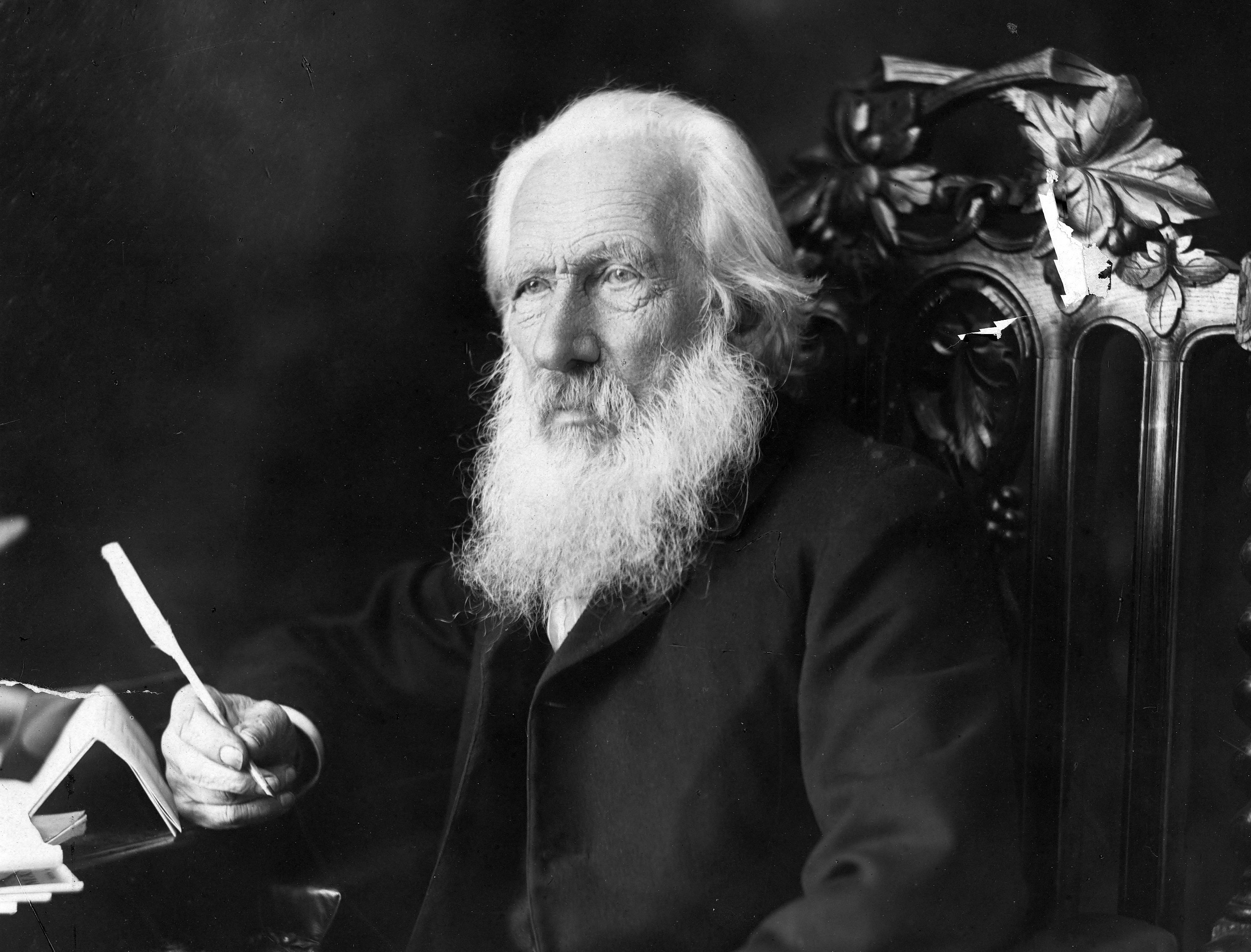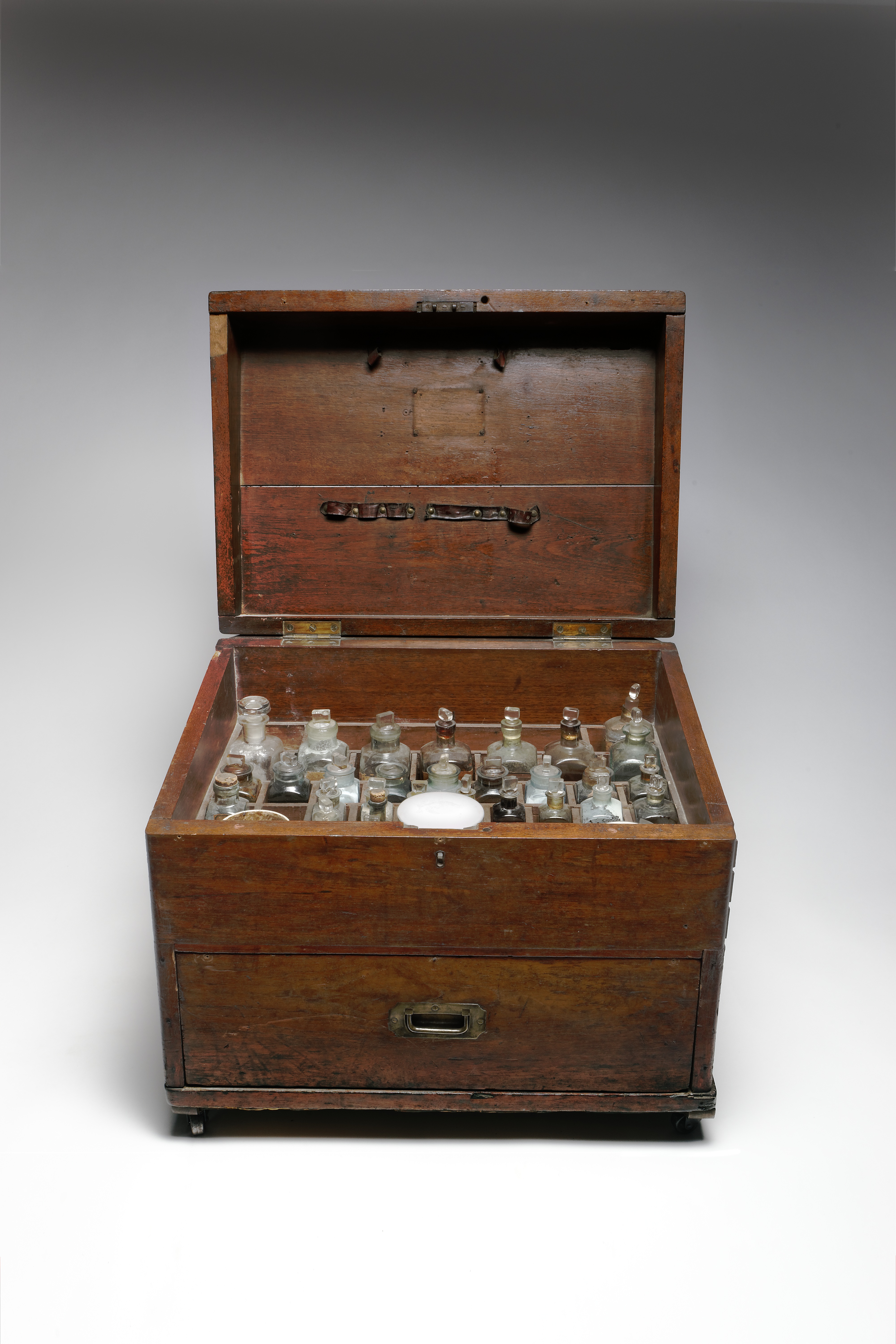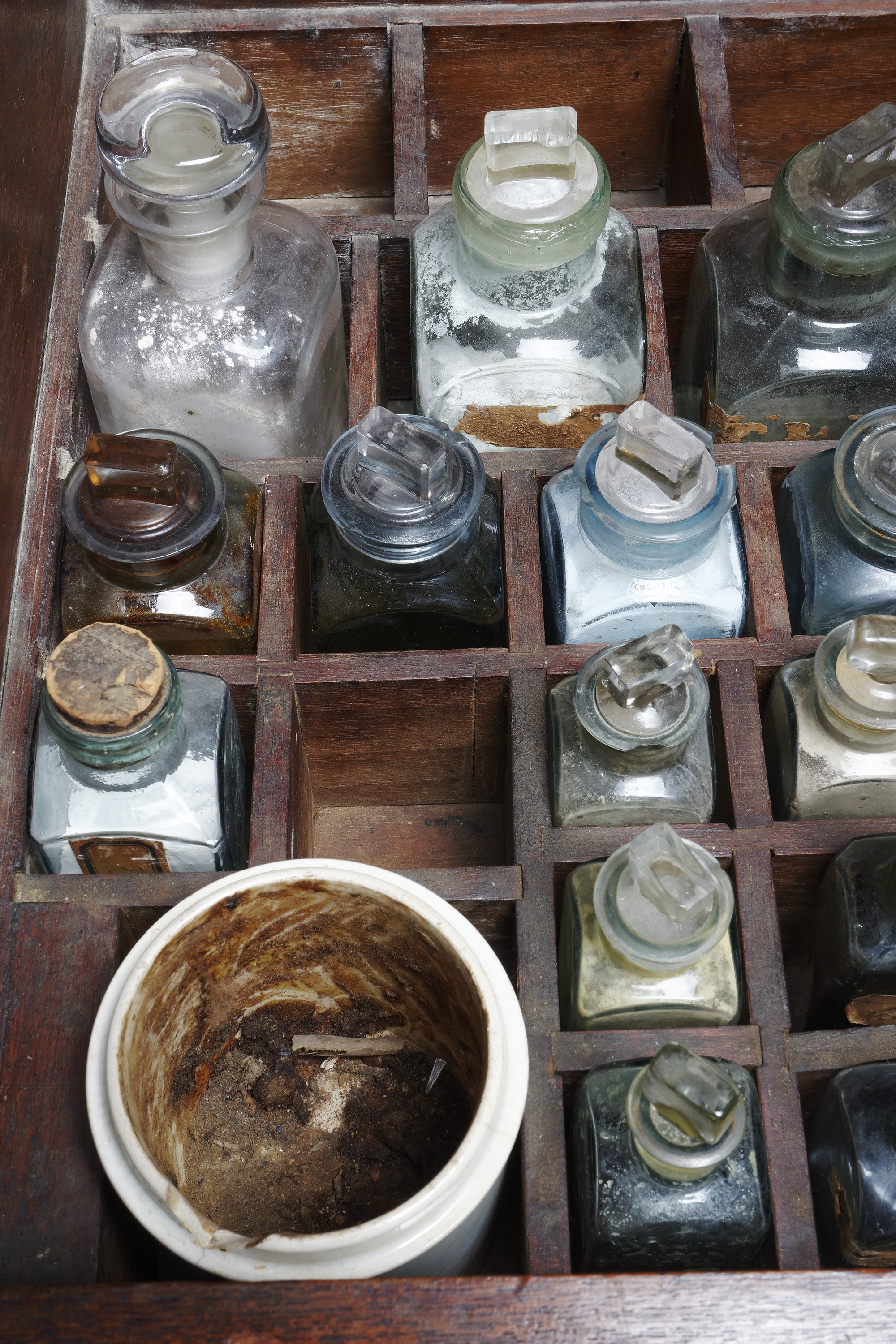
Sir John Logan Campbell’s Medical Chest
Sir John Logan Campbell (1817-1912) is regarded as a major founder of the Auckland settlement, where he was one of the earliest merchants, active in establishing many commercial and cultural organisations, and a major benefactor to the Auckland region. Items are held in the Auckland Museum relating to Sir John. The medical chest is the focus of this discussion. While he did not practice medicine in New Zealand, John Logan Campbell’s interest in health and community wellbeing was evident in his contribution to the new city.
John Logan Campbell is said to have been born in Edinburgh, Scotland, on 3 November 1817, the only son of John Campbell and his wife, Catherine Logan, of Ayrshire. His father, as a younger son of Sir James Campbell, fourth baronet of Aberuchill and Kilbryde, had been obliged to make his own way. John Logan (son) like his father studied medicine at the University of Edinburgh. Just before graduating as a medical doctor, he decided not to practise in his homeland, but to go to the antipodes backed by £1,000 (which his father had provided) and try his hand at sheep farming.
He left Greenock in Scotland for South Australia on 3 July 1839 as surgeon on an emigrant ship, the Palmyra. He was contracted to look after approximately 150 passengers on a long, rough sea voyage. This was seen as a massive responsibility in an age where antibiotics or even proper sanitation did not yet exist. The Palmyra set sail from Greenock, Scotland on 3 July 1939. Just four days into the voyage, the ship collided with another vessel near Tuskar Rock in the Irish Sea. This caused it to lose its cutwater, bowsprit, and part of its mast and had to turn back for repairs. The second attempt began on 20 July, and the ship finally reached Port Adelaide, Australia, on 29 October 1839. Despite the rough start to the voyage, and the many health risks, all passengers survived the voyage —valuing this particular medical chest at the weight of Campbell’s medical competence.
The object that ties John Logan Campbell back to his medical roots is a remarkable one: a wooden medical chest, still intact—now housed at Auckland War Memorial Museum Tāmaki Paenga Hira. This medical chest was gifted to Campbell by the captain of the Palmyra as a token of gratitude for his excellent service as the ship’s surgeon at the end of the journey. Imagine it — on a heaving wooden ship for months at sea, with dozens of passengers are crammed below decks, prone to seasickness, infections, malnutrition, or worse. The medical chest would have become Campbell’s toolkit — containing tinctures, powders, surgical instruments, and bandages.
After that voyage, John Logan Campbell never again formally practised medicine. But neither did he start sheep farming after he made an inland tour of New South Wales during a drought-stricken summer. In March 1840, he left on the Lady Lilford for New Zealand. On 13 April 1840 Campbell joined forces at Herekino on the Coromandel Peninsula with William Brown, a Scottish lawyer whom he had befriended on the Palmyra. After some three months together as guests of Ngāti Tamaterā on the Coromandel coast, they sailed to Motukorea, an island at the mouth of the Waitematā Harbour. On this island, which they bought from Māori owners for a few goods, they waited, confident that the capital of the colony would be established on the nearby Tāmaki isthmus. In Poenamo, Campbell recalled that the partners had 'one fixed determination, and that was to become purchasers of town lots in the new capital’.
Campbell never practised medicine again after that voyage—at least not in any formal sense. Nonetheless, the medical insights he acquired from his journey to his final resting place greatly influenced his attitude towards public healthcare. For medicine, it seems, was always with him — just in different forms. When he relocated to Auckland in 1840, he co-founded Auckland’s first merchant firm, ‘Brown and Campbell’, and began a career in business and later tireless civic involvement. On top of that, he also donated money to hospitals (such as Auckland Hospital), supported maternal health, and even committed to public welfare beyond his lifetime through the initiative known as the Sir John Logan Campbell Medical Trust (since 1970—The Cornwall Park Trust Board). Much against his inclinations he became caught up in politics, serving as provincial superintendent from November 1855 to September 1856, as a member of the House of Representatives for the City of Auckland from October 1855 to November 1856, and briefly (June to November 1856) as a member of the colony's first stable, responsible ministry under E. W. Stafford. By the 1870s Campbell had become a considerable figure in the Auckland community. He held aloof from all party-political affairs, but this added to his reputation for integrity and high-mindedness. And he continued to serve on boards controlling financial institutions, companies, artistic and scientific organisations, and non-political organs of local government.
In May 1901, with the visit of the Royal visit of the Duke and Duchess of Cornwall and of York, John Logan Campbell was appointed as mayor for three months, as 'the most esteemed citizen of New Zealand', to welcome them. Logan Campbell used the opportunity to gift 230 acres of One Tree Hill to be called Cornwall Park to honour the heir apparent. Later through the auction of suburban villa sites on the margins of the One Tree Hill estate, Campbell was able to clear his mortgage on the remainder of this property. In 1907 he made a second gift of 104 acres, and then in 1908 donated a further 143 acres of endowment land for the upkeep of the park. In addition, Campbell gave generously to a variety of charitable causes, especially those involving mothers and young children. In his will, after providing annuities for his wife and daughter, Campbell directed his executors to devote the bulk of his residuary estate to assist social, charitable and educational causes.
Campbell died on 22 June 1912, after a brief illness. The Auckland Star captured the city's feelings when it announced 'The Passing of a Patriarch'. On 25 June 1912, his body was borne from his Parnell home, Kilbryde, to its burial place on the summit of Maungakiekie (One Tree Hill), followed by the largest funeral cortège in Auckland's history.
In 2025, Our Health Journeys continued our partnership with Saint Kentigern College in Auckland to challenge a number of students to conduct research into an aspect of the medical history of Aotearoa New Zealand. The students, ranging from Years 8-13, produced their research in written, oral, or video format and the top projects were chosen for publication to Our Health Journeys.





